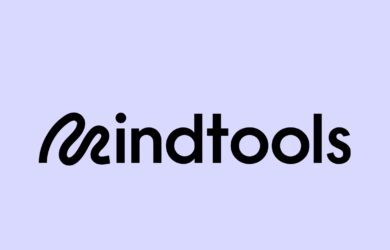If you’re a people manager, then at some point you’ll likely need to fill a vacant position. And chances are, you’ll face a choice between two options: appoint someone from within, or go for an external candidate.
Positive Promotion
Promotion from within is almost always a positive, win-win scenario. For one thing, it’s motivating: team members see their colleagues being promoted and think, “That could be me in six months.”
For another, it represents a significant return on the money that your organization has already invested on training that individual. An internal candidate will likely cost less to get “up to speed,” whereas the costs of onboarding a new hire can be substantial.
Whatever your final decision on a hire, it’s good practice to circulate vacancies within your own company first. That way, even if you end up employing someone new, you can at least show that you’ve given your existing staff a chance to prove themselves. You may also get suggestions for external hires from within your existing workforce, particularly if you have a “finder’s fee” policy.
Developing a Development Culture
Promoting from within also has the practical benefit that someone who has come up from the ranks will already understand the culture of the organization. This reduces the possibility of a misstep in hiring from outside, where you might end up with a “square peg in a round hole.”
Of course, much depends on the quality of the training that your existing staff have had. Encouraging a culture in which people train to progress means offering them regular opportunities to develop their skills. This may not come cheap, but it has long-term benefits in terms of both cost and morale.
Is there a downside to promoting from within? Well, perhaps, if people come to expect it. You want to discourage a situation in which team members are thinking, “Me next.” Promotion always needs to be something you earn.
Identifying the Skills Gap
One of the most important factors in deciding whether to hire or develop people is the nature of the skills that you’re trying to get onboard. If you’re lucky − and if your in-house training has been good enough − you’ll have a ready-made pool of talent ready and eager to take the next step.
Sometimes, though, it’s hard to get around the fact that you need to bring someone in from outside. This is particularly true of small companies, or those in the process of developing new functions. Where you may previously have been able to rely on contractors or freelancers to get specific jobs done, the point will come at which that stops being cost-effective.
So, you might need to take on a managing accountant as the business grows, for example, or broaden your organization’s web design skill set to meet ambitious online development targets. These new roles will unlikely be suitable for your existing staff. If you’re in any doubt whether a skills gap exists, try using a skills matrix to audit their skills and identify any shortfalls.
In most other cases, though, it’s usually worth at least making the vacancy known internally. You may not find your next CIO that way, but you could discover that your people have a surprising range of skills that you didn’t know about.
Seeing the Big Picture
You may also need to bring in people at a senior level, when it simply isn’t appropriate to apply from within. Strategic vision usually only comes from long experience in management roles, for example.
A fresh pair of eyes at a senior level will also make it less likely for your company to fall into the trap of repeating mistakes, or continuing to commit to practices that don’t work. New, external perspectives are often very important for companies working in fast-moving, innovative environments.
Do you have experience of people in your organization who have successfully “trained up?” Or do you make a point of always looking beyond the walls of your workplace for fresh talent and skills? Let us know in the Comments section below.




Comments
Ronald Cluck says
7 years agouseful post.
Midgie Thompson says
7 years agoThanks Ronald for the feedback. What is your view, would you train or hire to get skills in?
Wolfgang Winter says
6 years agoIt depends! Train or hire - I have seen both approaches succeed and fail. I think success with an external hire is near when the new employee's skills (qualifications, experience, hard skills, transferable skills and soft skills) match a well thought-through profile AND the external hire adds new capabilities/experience to the organization. The soft skills, especially the "cultural fit", are much more important than many organizations tend to think!
Internal candidate developed/trained up to a new role have their challenges, too. They will typically have a good cultural fit, but can carry baggage from the past. Promoting from within sometimes creates headwind for the promoted employee if other "unsuccessful" candidates think they should have got the job.
I try to develop current employees when current skills/potential are a good fit with projected future skill requirements. I have to identify and attract new talent if the fit is not that great.
I am proud to say that a number of top performers who I promoted or high potentials who I brought in years ago,
developed nicely and are still going strong.
Midgie Thompson says
6 years agoThank you Wolfgang for sharing your experiences. I agree there are advantages and disadvantages of both approaches and one needs to be careful and consider all the options before deciding on the best way forward. Also congratulations on the success of those top performers that are still going strong! It must feel great to have contributed to their success!
Cao Shuangyao says
6 years agoUseful. I love to promote from internal due to its positive and win-win scenario, regular talent assessment and bench development is important. when it's not easy to figure out I will turn to external. I ever had two successful external hire which bring team fresh perspective and new skills. I would like to say both ways are great but it depends when you use.
Midgie Thompson says
6 years agoThanks Shuang-yao for sharing your experiences and I agree with you that there are benefits with both approaches. It is dependent on what you are looking to achieve in the overall scheme of things to decide upon which approach might be more appropriate.
Midgie
Mind Tools Team